Imagine pulling a warm, golden loaf of olive-studded bread from your oven—crusty on the outside, soft and chewy inside, bursting with Mediterranean flavors. Sounds irresistible, right?
If you're craving the perfect olive bread recipe with a crisp crust and a tender, flavorful crumb, this recipe is exactly what you need. No special equipment required—just simple ingredients and a few hours of mostly hands-off time. Whether you're a seasoned baker or a beginner, this rustic loaf will quickly become a household favorite.

Why You'll Love This Olive Bread
There’s something truly magical about the scent of freshly baked bread wafting through your kitchen—the kind that instantly makes a house feel like home.
This olive bread recipe isn’t just another loaf; it’s a perfect blend of rustic comfort and bold Mediterranean flavors.
The rich, tangy olives add depth to every bite, while the golden, crackly crust gives way to a soft, airy interior.
Whether you're making sandwiches, pairing it with cheese, or simply dipping it in olive oil, this olive bread recipe is a game-changer.
And the best part? You don’t need to be an expert baker to achieve bakery-quality results. Even if you’re new to bread-making, this approachable recipe will guide you to a stunning, flavor-packed loaf that’s sure to impress.
The Rich History of Mediterranean Olive Bread Recipe
For centuries, olive bread recipe has been a cherished staple in Mediterranean cuisine, deeply rooted in the culinary traditions of regions like Italy, Greece, and southern France. Local bakers would incorporate briny, sun-ripened olives from nearby groves into their daily bread, transforming a simple loaf into a flavorful, rustic delight.
Beyond its rich history, olive bread recipe remains a beloved part of Mediterranean dining.
Its savory depth and airy texture make it the perfect companion to classic dishes—whether paired with fresh tomato soup, grilled fish, or a vibrant spread of cheeses and cured meats.
And of course, there’s no better way to enjoy it than tearing off a warm slice and dipping it into a bowl of high-quality olive oil infused with fragrant herbs.
Jump to:
Ingredients
- All-purpose flour (bread flour works too for a chewier texture)
- Warm water
- Active dry yeast
- Salt
- Olive oil
- Olives, pitted and roughly chopped (Kalamata, green, or a mix)
- Fresh rosemary, chopped (optional)
- Garlic, minced (optional)
- Cornmeal for dusting (optional)
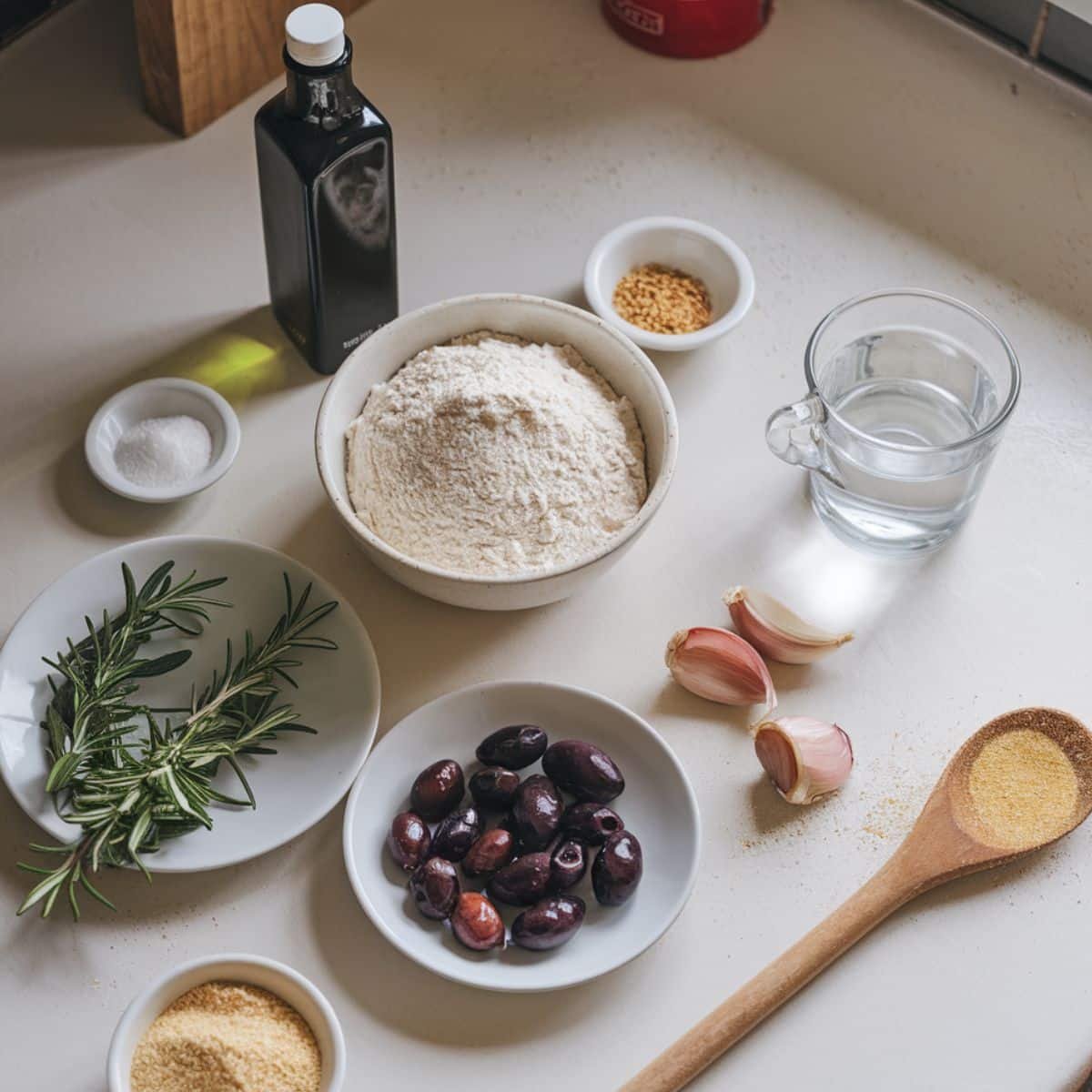
About the Olives
The type of olives you choose will significantly impact the flavor of your bread. Kalamata olives provide a rich, wine-like taste, while green olives offer a brighter, brinier flavor. A mix gives you the best of both worlds! Be sure to drain and pat them dry before chopping to prevent excess moisture in your dough.
Don't have olives on hand? You can substitute sun-dried tomatoes, roasted garlic, or even caramelized onions for a different but equally delicious variation.
See recipe card for quantities.
Instructions
Make the Dough
- Mix warm water and yeast in a large bowl and let sit until foamy.
- Add olive oil, flour, and salt to form a shaggy dough.
- Knead until smooth and elastic, either by hand or with a stand mixer.
- Fold in the chopped olives, rosemary, and garlic (if using).
First Rise and Shaping
- Place dough in an oiled bowl, cover, and let rise until doubled in size.
- Punch down the dough gently and shape into a round or oval loaf.
- Place on a cornmeal-dusted parchment paper.
- Make a few shallow slashes across the top with a sharp knife.
Second Rise and Prep
- Cover shaped loaf and let rise again until puffy.
- Preheat oven to 425°F with a baking stone if you have one.
- Place a pan of water on the bottom rack to create steam.
- This steam helps develop a beautiful crispy crust.
Bake and Cool
- Slide the loaf with parchment onto the hot stone or baking sheet.
- Bake until golden brown and hollow-sounding when tapped on the bottom.
- Transfer to a wire rack and allow to cool before slicing.
- Enjoy your homemade olive bread!
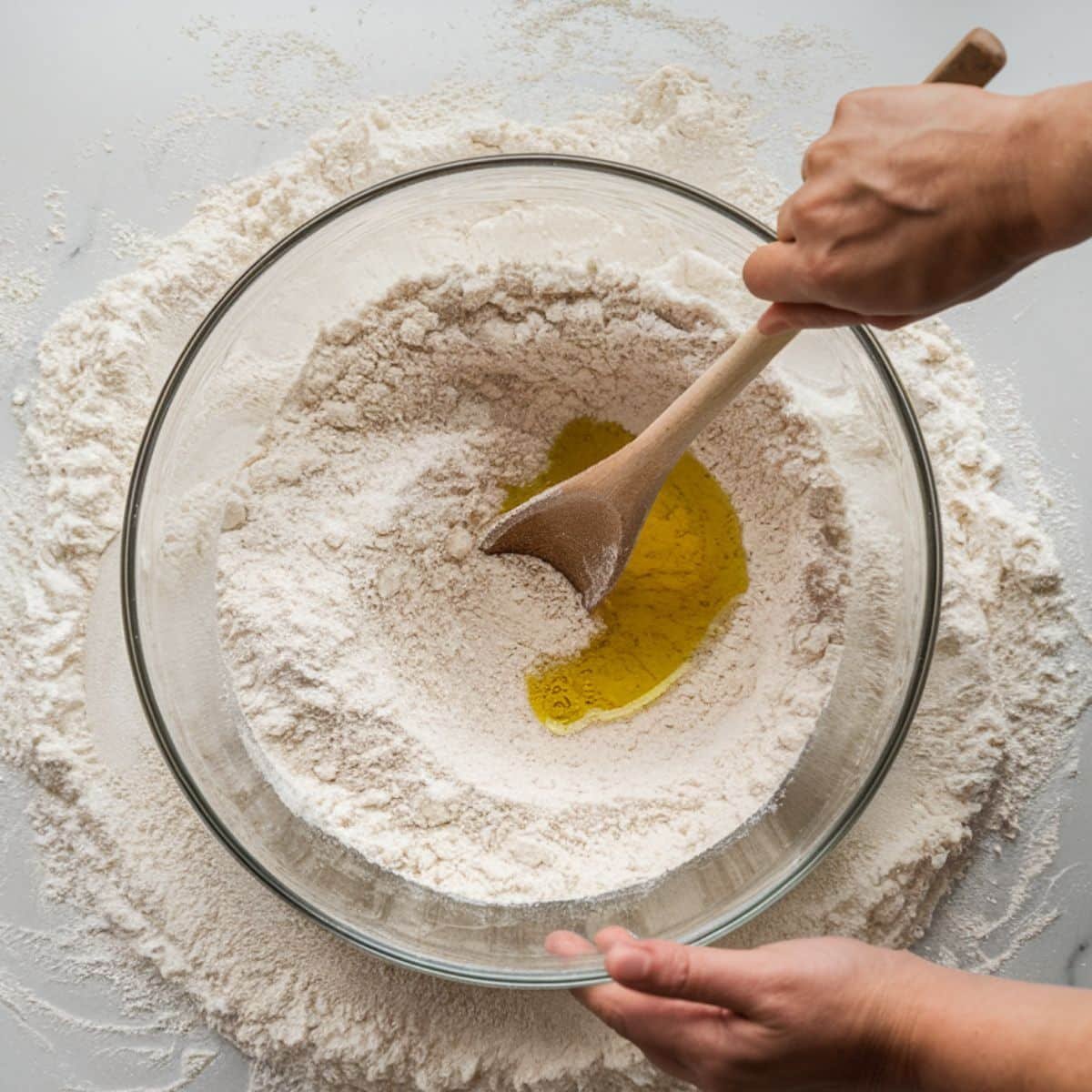
- Make the Dough:Combine warm water, yeast, olive oil, flour, and salt, then knead until a rough dough forms.
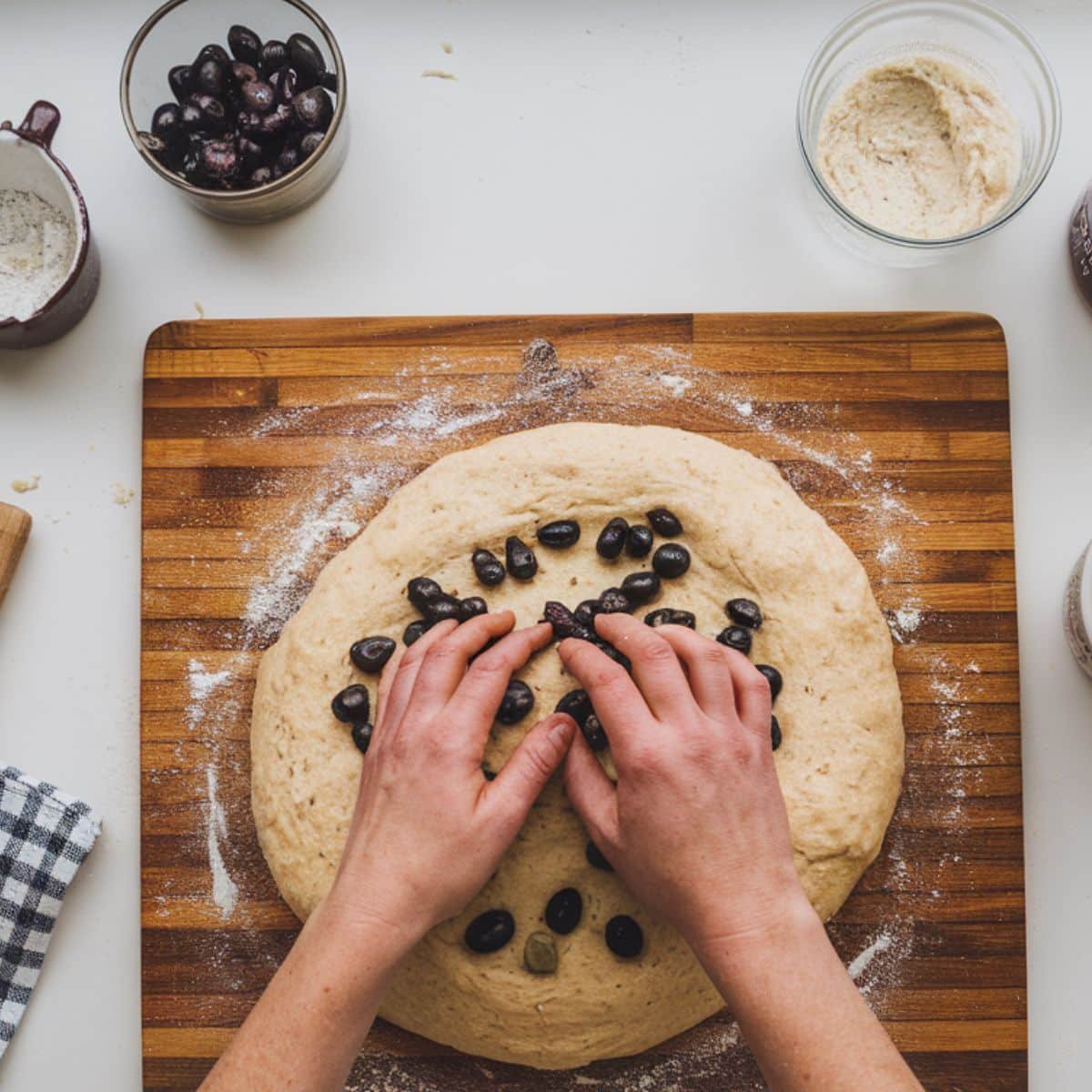
- First Rise and Shaping: Combine warm water, yeast, olive oil, flour, and salt, then knead until a rough dough forms.
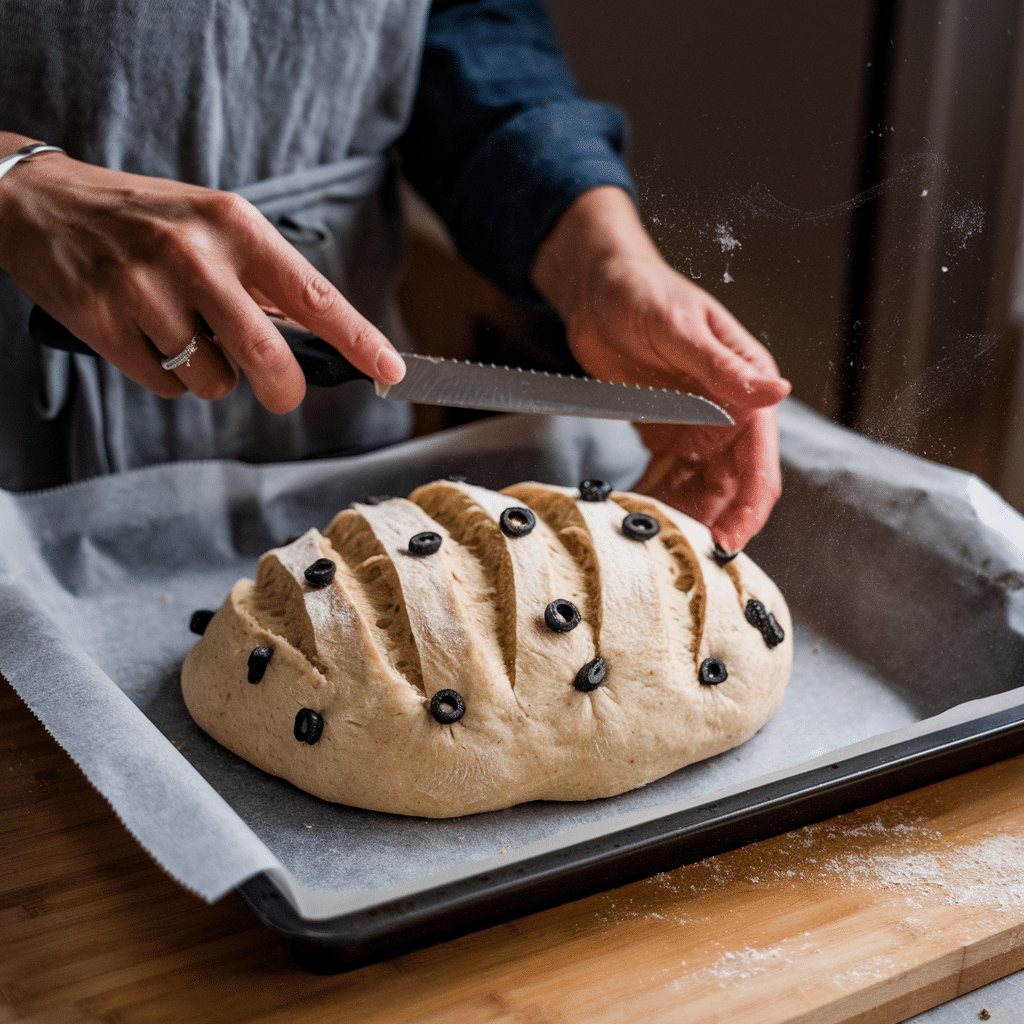
- First Rise and Shaping: Let the dough rest until doubled in size, then shape it into a round or oval loaf.
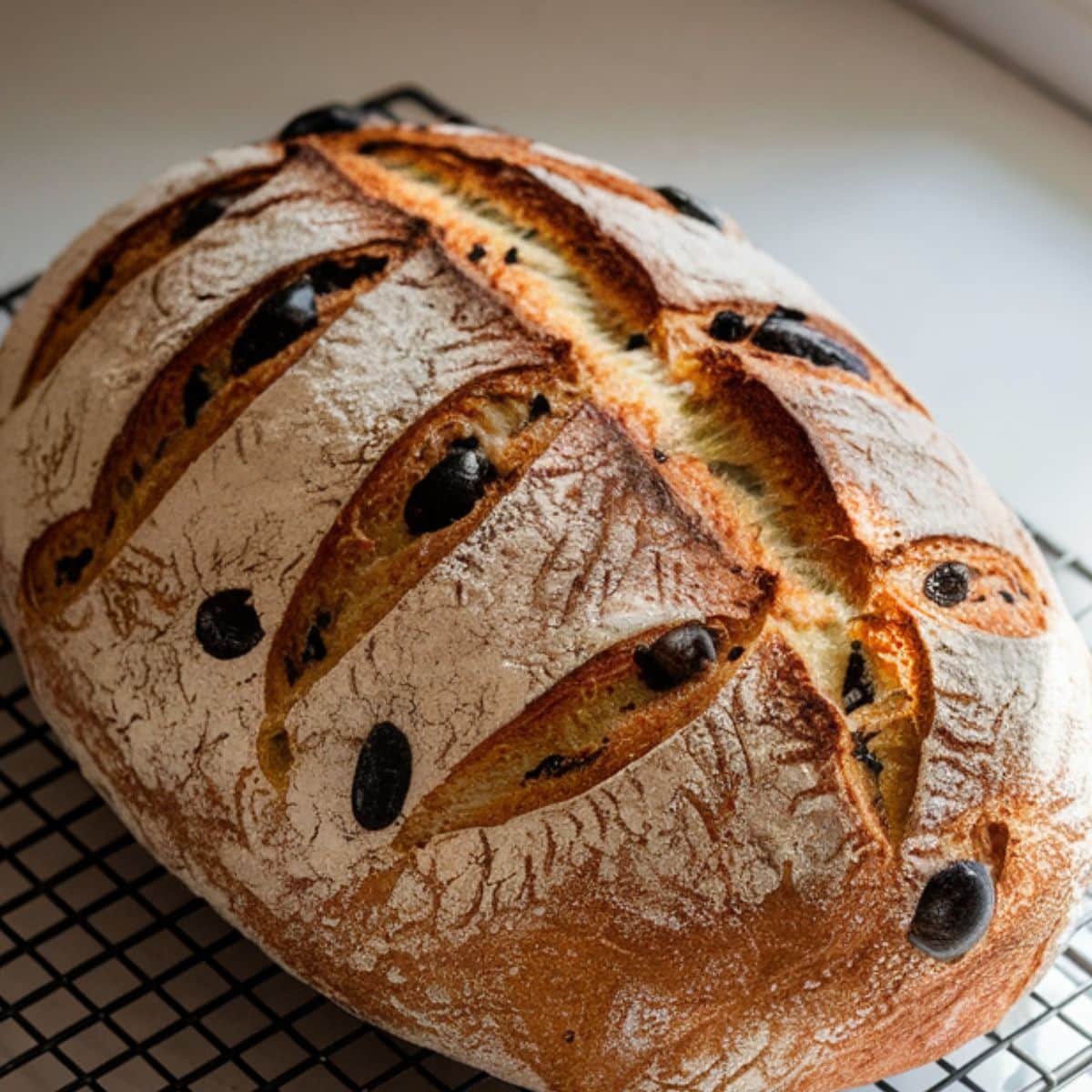
- Bake and Cool: Bake until golden brown, then let it cool before slicing and enjoying.
Equipment For Olive Bread Recipe
- Dutch oven: Baking your bread in a preheated Dutch oven creates an ideal environment for crusty artisan bread.
- Baking stone: A stone helps distribute heat evenly and absorbs moisture for a crispy crust.
- Bread lame or sharp knife: For scoring the top of your loaf before baking.
- Parchment paper: Makes transferring the dough to a hot oven easy and prevents sticking.
No fancy equipment? No problem! A regular baking sheet works fine – just add the pan of water to the oven as described above to create steam
Expert Baking Tips for Perfect Olive Bread Recipe
- Temperature matters: Use warm water (110°F) for yeast activation – too hot will kill the yeast, too cool won't activate it properly.
- Salt timing: Add salt after the flour to prevent direct contact with yeast, which can inhibit yeast activity.
- Measure by weight: For the most consistent results, use a kitchen scale to measure ingredients.
- Check for doneness: An instant-read thermometer inserted into the center of the loaf should read 190-200°F when the bread is fully baked.
- Patience pays off: The longer the first rise, the more flavor your bread will develop. You can even refrigerate the dough overnight for a slow rise and extra flavor.
Delicious Variations of Olive Bread Recipe
Mediterranean Herb Olive Bread
Add 1 tablespoon each of chopped fresh thyme, oregano, and basil along with the olives for a fragrant herb version.
Cheese and Olive Bread
Fold in ½ cup of crumbled feta or grated Parmesan cheese with the olives for a savory, protein-rich loaf.
Spicy Olive Bread
Add ½ teaspoon of red pepper flakes or one finely chopped jalapeño for a bread with a kick.
Whole Wheat Olive Bread
Replace up to half of the all-purpose flour with whole wheat flour for a heartier, more nutritious loaf.
You may need to add an extra tablespoon or two of water.
Dietary Modifications
Gluten-Free Olive Bread
Substitute the all-purpose flour with a good quality gluten-free flour blend that contains xanthan gum.
The texture will be different, but still delicious.
Vegan Olive Bread
This recipe is naturally vegan!
Just make sure any add-ins like cheese are plant-based if needed.
Storage
Counter Storage
Store your olive bread recipe in a paper bag or bread box for 2-3 days.
The crust will soften over time but can be refreshed in a 350°F oven for 5-10 minutes.
Freezer-Friendly
This olive bread recipe freezes beautifully!
Cool completely, slice if desired, and store in a freezer bag for up to 3 months.
Thaw at room temperature or toast slices directly from frozen.
Make-Ahead Options
You can refrigerate the dough after the first rise for up to 24 hours.
Shape and bake as directed when you're ready.
My Grandmother’s Secret Touch
There was something special about the way my grandmother made bread—no rushing, no shortcuts, just pure intuition and love woven into every step.
One of her best-kept secrets was a simple yet powerful technique: the autolyse method.
Before adding the yeast and salt, she would let the flour and water rest together for 20–30 minutes.
“Let the ingredients get to know each other,” she’d say with a knowing smile.
This short pause worked wonders, allowing the flour to fully hydrate and the gluten to develop naturally.
It made the dough more elastic, easier to knead, and created that perfect balance of a crisp crust and airy, flavorful interior.
It’s a small step, but it makes all the difference—just like the love and patience she poured into every loaf.
FAQ
Is olive bread healthy?
Yes, olive bread recipe is healthy! It contains heart-healthy monounsaturated fats from olives and olive oil that may help reduce bad cholesterol. Homemade olive bread has fewer preservatives than store-bought versions. For extra nutrition, use whole grain flour in your olive bread recipe. It provides complex carbohydrates, some protein, and beneficial antioxidants from the olives.
What is the Italian name for olive bread?
The Italian name for olive bread is "Pane alle Olive." This Mediterranean staple is popular in regions like Liguria, Puglia, and Sicily where olives are abundant. Traditional pane alle olive contains Kalamata or Gaeta olives and herbs like rosemary. Italian bakers make it with a simple flour, water, yeast, and salt base to highlight the olive flavor
What is olive bread made from?
Olive bread recipe is made from flour (bread or all-purpose), water, yeast, salt, olive oil, and pitted olives (black, green, or mixed). Most olive bread recipes include herbs like rosemary or oregano, and sometimes garlic for extra flavor. The olives provide the distinctive Mediterranean taste that makes this bread special. Some variations include cheese, sun-dried tomatoes, or nuts.
What do you eat olive bread with?
Olive bread recipe pairs perfectly with Mediterranean foods like hummus, tzatziki, or baba ganoush. Dip it in quality olive oil with herbs and balsamic vinegar. It complements cheese boards beautifully, especially with feta or goat cheese. Olive bread enhances soups and stews, particularly tomato-based ones. Use it for sandwiches with grilled vegetables, cured meats, or fresh mozzarella.
From Dough to Delight: Your Olive Bread Journey Begins
Baking homemade olive bread is more than just a recipe—it’s a connection to centuries-old traditions, a celebration of simple ingredients, and a journey of flavors that bring warmth to your kitchen. Whether you’re a seasoned baker or kneading dough for the first time, this rustic loaf is an experience as rewarding as its delicious aroma filling your home.
Once you’ve mastered this Olive Bread Recipe, the possibilities are endless.Experiment with different olives, add fresh herbs, or even incorporate roasted garlic for your own signature touch.
And if you’re craving more homemade bread magic, try our Soft French Baguette Recipe for that classic Parisian crunch or indulge in the pillowy perfection of our Fluffy Japanese Milk Bread Recipe.
Have you baked olive bread before? What’s your favorite way to enjoy it?
Drop your thoughts, questions, or secret ingredients in the comments below—we’d love to hear from you!
Related
Looking for other recipes like this? Try these:
Pairing
These are my favorite dishes to serve with Olive Bread Recipe

Easy Olive Bread Recipe
Equipment
- Large mixing bowl For making the dough
- Wooden spoon For mixing ingredients
- Kitchen towel To cover dough while rising
- Baking sheet For baking the loaf
- Parchment paper Prevents sticking
- Serrated knife For scoring and slicing
- Wire rack For cooling the bread
Ingredients
- 3 ½ cups all-purpose flour or bread flour for chewier texture or bread flour for chewier texture
- 1 ½ teaspoons salt
- 1 packet active dry yeast ~2 ¼ tsp
- 1 ¼ cups warm water ~110°F
- 1 tablespoon olive oil extra virgin recommended
- 1 cup olives chopped Kalamata, green, or mixed
- 1 teaspoon fresh rosemary chopped optional
- 1 clove garlic minced optional
- 1 tablespoon cornmeal optional optional for dusting
Instructions
- Combine warm water and yeast in a bowl; let sit until foamy.
- Stir in olive oil, flour, and salt until a shaggy dough forms.
- Knead dough until smooth and elastic.
- Add chopped olives, rosemary, and garlic (if using).
- Cover and let dough rise until doubled in size.
- Punch down dough and shape into a loaf.
- Let shaped dough rise again until puffy.
- Set oven to 425°F and place a pan of water inside for steam.
- Make shallow slashes on top of the loaf.
- for 30-35 minutes until golden brown.
- Transfer to a wire rack and let cool before slicing.

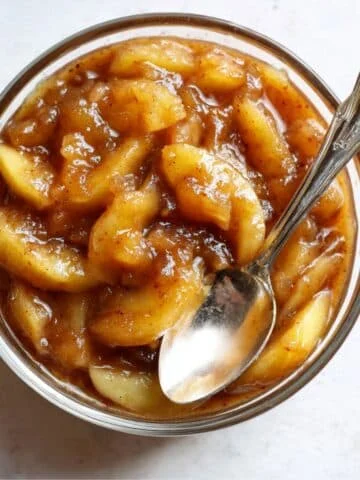




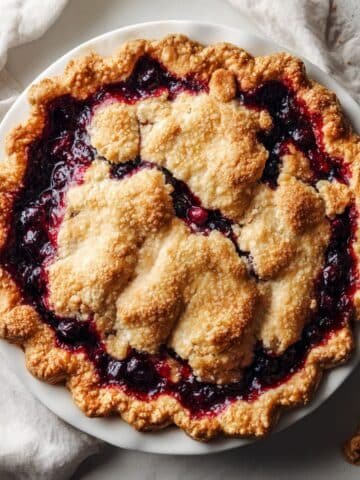
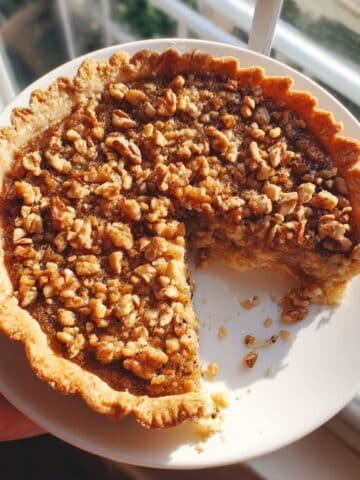
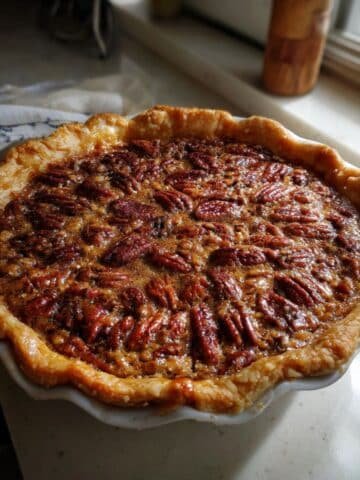
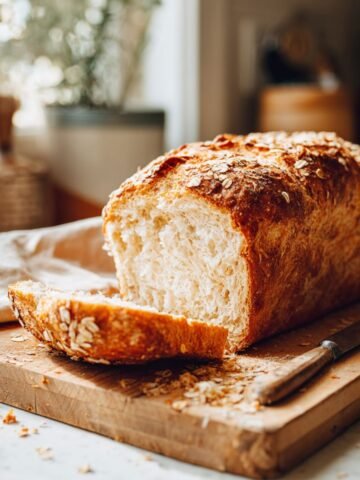

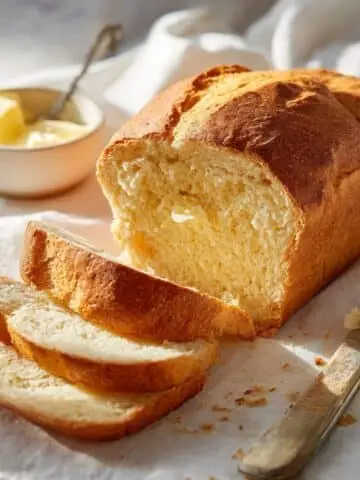
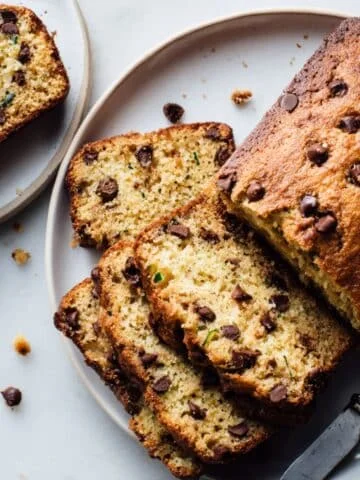
Leave a Reply